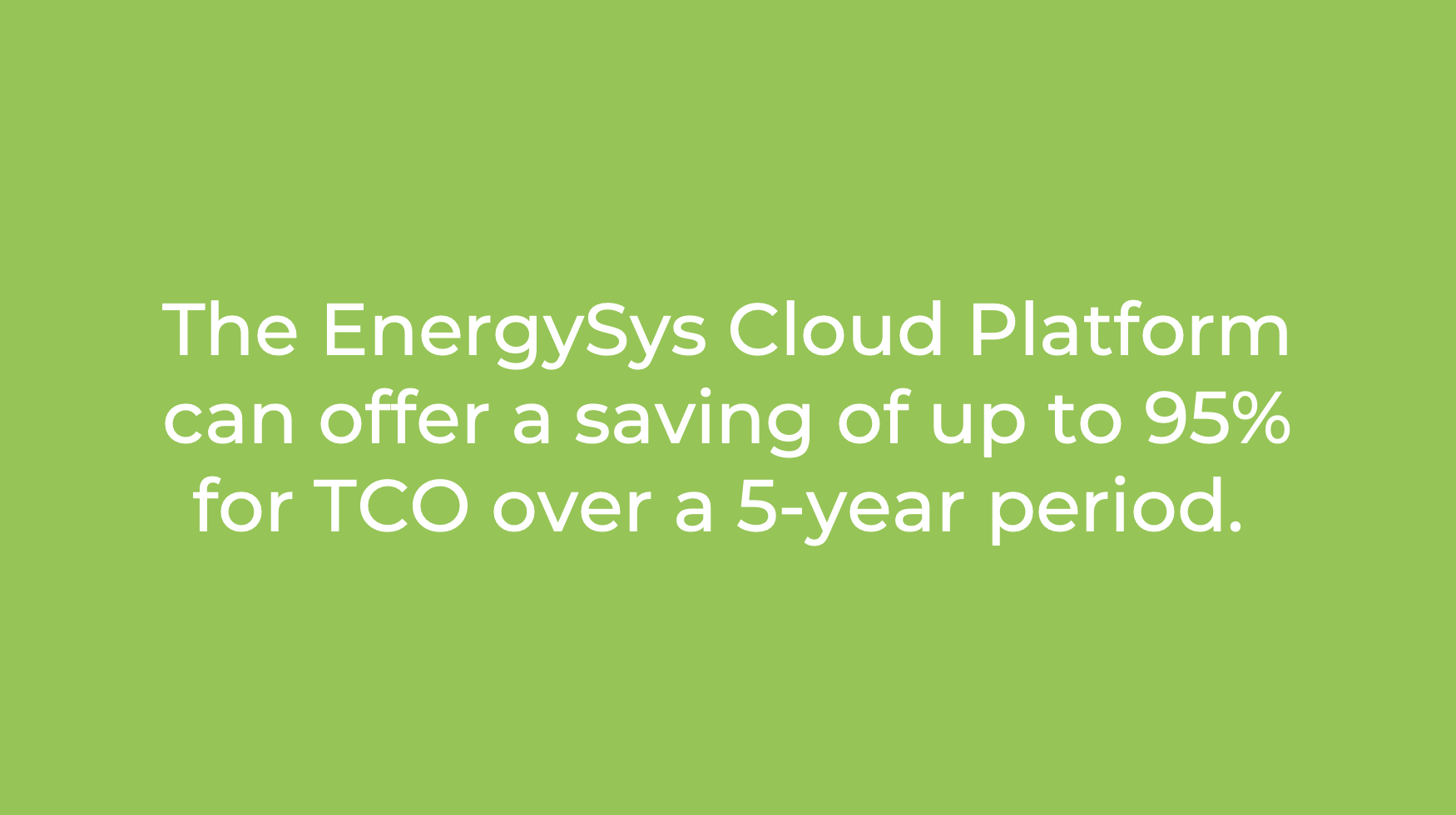The benefits of cloud computing are no secret. Adoption rates within the oil and gas industry are increasing year on year. More companies demand the flexibility provided by low-code software to address the challenges of the modern market.
However, as many adjust to operating in a low-cost environment, implementing new software can seem like an unnecessary risk. No matter how good the benefits of switching to a modern cloud solution, is it worth the upheaval, cost and time?
This is where a new generation of modern, configurable low-code cloud software come into their own. They are changing the rules for application development. They give you the flexibility to create a completely tailored solution without requiring expensive software development or coding.
Customised software, without customisation
It’s likely your current Hydrocarbon Management solution will be heavily customised. This may have been done from the outset to deal with your own unique requirements. It may have evolved over a period of years as new assets, partners or reports were added. You may even be running some workarounds using spreadsheets to fill capability gaps.
Irrespective of the type of customisation, it can seem like a formidable task to unpick and replicate them in a new system. It’s likely a task you probably don’t want to undertake until you absolutely have to.
Low-code cloud software means all of your customisations can be quickly replicated in a new system. You no longer face a choice between the sky-high cost of a bespoke system or trying to make a generic system fit your needs.
With a low-code platform, business users can set up it up to meet exact needs. You don’t need specialist skills to make changes. This means new processes, software applications and updates can all be completed in-house.
Fast, flexible implementation options
No doubt you remember your last implementation project. They have a not unwarranted reputation for being slow, frustrating, costly and disruptive. They require a vast development team, both internally and externally.
Despite paying for consultants or specialists to deliver the project goals, even the best-planned projects can go awry. You could end up exceeding budgets and placing extreme pressure on your internal resources.
Cloud implementations are different. Everything is done with configuration. Implementations are flexible and usually more straightforward.
This means typical delivery teams can be smaller, between two and five people. This translates into lower costs and more efficient project management.
There are several ways you can implement a cloud solution. No other software gives you as much choice. If you have a tight budget and your resources are stretched thin, you can choose a phased approach.
You only pay for what you use within a cloud environment. This means you can start out small with a lower cost and add assets when you need to.
Alternatively, get an implementation partner to do the initial implementation for you. This is an excellent option for those looking for guided best practices. It would also suit those who are setting up a new Hydrocarbon Management system for the first time.
Partners bring a wealth of domain experience and product knowledge. This often translates into a faster, more comprehensive implementation. Partners can also save time and automate business processes you hadn’t thought of.
Lower cost, more value = fewer budget worries
We recently polled our social media followers on the biggest obstacles to implementing new software. ‘Budget’ was voted the number one inhibitor.
It can be difficult to justify budget for new software when your current system does the job. But let’s consider the cost of staying with your current solution.
How much will you have to spend on consultants, or resourcing, to make changes? Will it be easy to train and onboard new talent? How much will it cost to scale the system up – or down – in line with the business goals? When is your next upgrade due and how much will that cost?
Cloud implementations can significantly reduce your total cost of ownership (TCO). For example, a new implementation can often cost the same, or even less, than the upgrade of a traditional system. And once you’re live, increased efficiency and greater flexibility mean further cost savings and greater productivity.
Cloud platform subscriptions take care of all the time-consuming, but critically important, IT tasks. Having effective project management software is crucial to bettering daily business processes.
Everything from expensive infrastructure and hardware, to licensing and regular upgrades.
All these features are included in one simple subscription. This gives you much more control and visibility of your budget. It’s also easier to manage, and takes a lot of unnecessary pressure off you and your IT team. Let the vendor worry about uptime, disaster recovery and security.
Based on our own experience, new adopters coming from traditional solutions have made their return on investment within a year or two. They have also been able to reduce their total cost of ownership by 70% on average. But more than that, their operation is smoother, has more transparency and better data integrity. Their team are adding value to the business rather than fighting fires.
Conclusions
Investing in new software can feel like a risk. The prospect of an implementation project may seem like a huge barrier to change. Modern cloud software fundamentally changes the way you build solutions and can significantly reduce the cost of change.
Low-code cloud software mitigates many of the obstacles associated with implementation project requirements. They can add long-term value to your business. However, the key step is to understand what that value looks like to your business. It might be lowering your TCO, or it might be empowering your team to manage the system internally and increase your business agility.
You need to assess and fully understand if switching software is the best option for your business. The choice could ensure successful projects and change the nature of your business now and in the future.
The benefits of cloud computing are no secret. Adoption rates within the oil and gas industry are increasing year on year as more companies demand the flexibility provided by low-code software to address the challenges of the modern market.
However, as many adjust to operating in a low-cost environment, with budget and resources under pressure, implementing new software can seem like an unnecessary risk. No matter how good the benefits of switching to a modern cloud solution, is it worth the upheaval, cost and time?
This is where a new generation of modern, configurable low-code cloud platforms come into their own. They are changing the rules for application development, simultaneously giving you the flexibility to create a completely tailored solution without requiring expensive software development or code customisation.
Customised software, without customisation
It’s highly likely your current Hydrocarbon Management solution will be heavily customised. This may have been done from the outset to deal with your own unique requirements, or it may have evolved over a period of years as new assets, partners or reports were added. You may even be running some workarounds using spreadsheets to fill capability gaps.
Irrespective of the type of customisation, it can seem like a formidable task to unpick and replicate them in a new system, and a task you probably don’t want to undertake until you absolutely have to.
Fortunately, the advent of low-code, flexible cloud solutions means all of your customisations can be quickly replicated in a new system. You no longer face a choice between the sky-high cost of a bespoke system or trying to make a generic system fit your needs.
With a low-code platform you can set up it up to meet your exact needs. You don’t need specialist skills to make changes, so new processes, applications and updates can all be completed in-house.
Fast, flexible implementation options
No doubt you remember your last implementation project. They have a not unwarranted reputation for being slow, frustrating, costly and disruptive, requiring a vast team, both internally and externally. Despite paying for consultants or specialists to deliver the project, even the best-planned projects can go awry, exceeding budgets and placing extreme pressure on your internal resources.
Cloud implementations are different. Because everything is done with configuration, implementations are flexible and usually more straightforward. This means typical delivery teams can be smaller, between two and five people, translating into lower costs and more efficient project management.
There are several ways you can implement a cloud solution. No other software gives you as much choice. One option, if you have a tight budget and your resources are stretched thin, is a phased approach. Because you only pay for what you use with cloud, you can start out small with a lower cost and add assets when you need to.
Alternatively, get an implementation partner to do the initial implementation for you. This is an excellent option for those looking for guided best practices or who are setting up a new Hydrocarbon Management system for the first time. Partners bring a wealth of domain experience and product knowledge, often translating into a faster, more comprehensive implementation that may provide time saving tips and processes you hadn’t thought of.
Lower cost, more value = fewer budget worries
We recently polled our social media followers on the biggest obstacles to implementing new software. ‘Budget’ was voted the number one inhibitor.
It can be difficult to justify budget for new software when your current system does the job. But let's consider the cost of staying with your current solution.
How much will you have to spend on consultants, or resourcing, to make changes? Will it be easy to train and onboard new talent? How much will it cost to scale the system up – or down – in line with the business? When is your next upgrade due and how much will that cost?
Cloud implementations can significantly reduce your total cost of ownership (TCO). For example, a new implementation can often cost the same, or even less, than the upgrade of a traditional system. And once you’re live, increased efficiency and greater flexibility mean further cost savings and greater productivity.

A cloud subscription is sold as a service and takes care of all the time-consuming, but critically important, IT tasks. Everything from expensive infrastructure and hardware, to licensing and regular upgrades, are included in one simple subscription. This gives you much more control and visibility of your budget, is easier to manage, and takes a lot of unnecessary pressure off you and your IT team. Let the vendor worry about uptime, disaster recovery and security.
Based on our own experience, new adopters coming from traditional solutions have made their return on investment within a year or two, while reducing their total cost of ownership by 70% on average. But more than that, their operation is smoother, has more transparency and better data integrity. Their team are adding value to the business rather than fighting fires.
Conclusions
Investing in new software can feel like a risk and the prospect of an implementation project may seem like a huge barrier to change. Modern cloud software fundamentally changes the way you build solutions and can significantly reduce the cost of change.
Low-code cloud solutions mitigate many of the obstacles associated with implementation projects and can add long-term value to your business. However, the key step is to understand what that value looks like to your business. It might be lowering your TCO, or it might be empowering your team to manage the system internally and increase your agility.
Whatever the end game looks like, you need to assess and fully understand if switching software is the best option for your business. The choice could change the nature of your business now and in the future.
Latest Resources
Methods for Cargo Berth Scheduling
With its intuitive interface, robust features, and seamless integration capabilities, EnergySys emerges as a trusted partner for port operators seeking to optimise cargo handling processes and drive business success.
Empowering Carbon Accountability Through ISO Standard and GHG Protocol Integration
With its ability to support ISO standards and the GHG Protocol, EnergySys empowers organisations to unlock actionable insights, driving meaningful progress towards a greener, more sustainable world.
Streamlining LNG Import Operations in India with Low Code
EnergySys empowers organisations to overcome challenges, seize opportunities, and drive sustainable growth in the dynamic energy landscape. As India continues its journey towards energy security and economic prosperity, solutions like EnergySys will undoubtedly play a pivotal role in shaping the future of LNG importation.
Download

